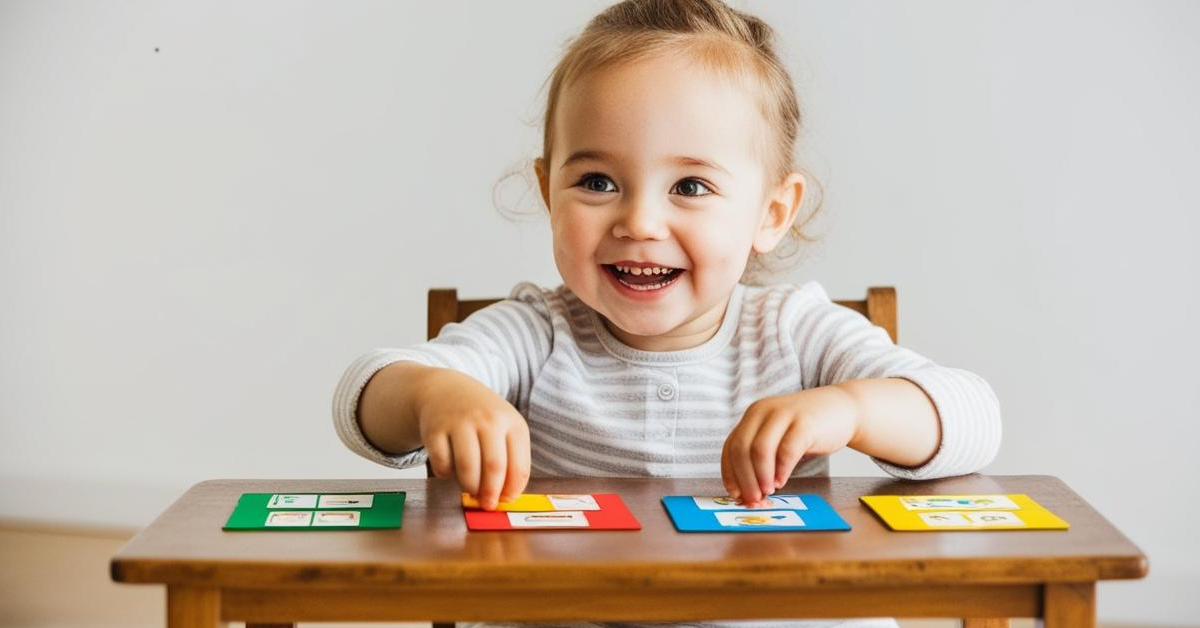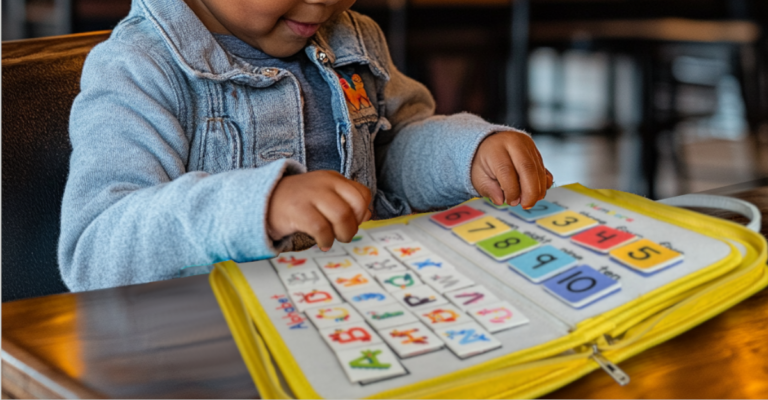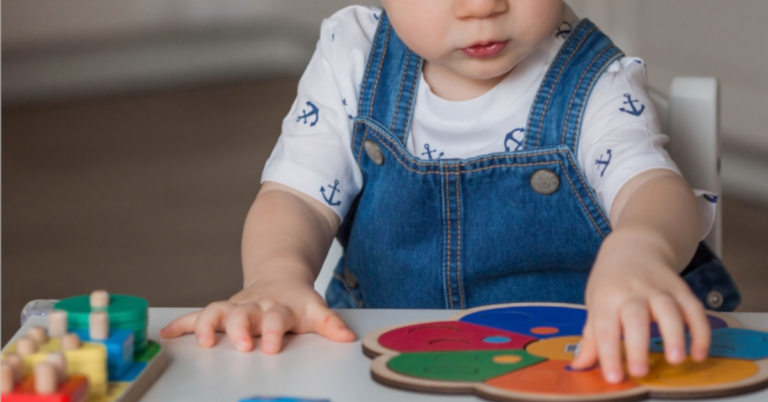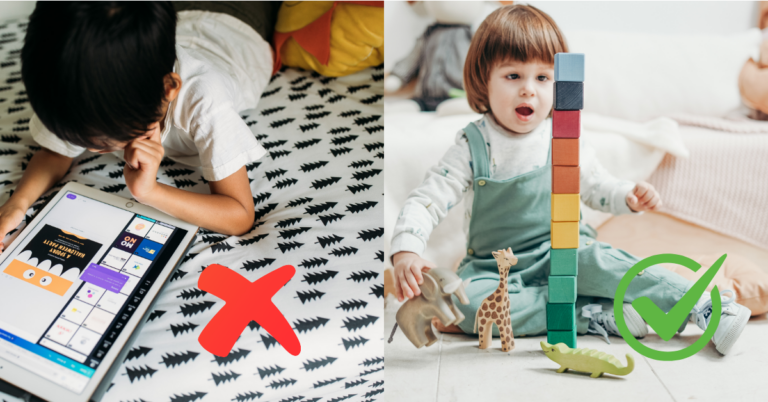Teaching young children how to read can feel like a daunting task, but the Montessori method offers simple, engaging tools to make the process both fun and effective. One of these tools is the use of 3-part cards, a hands-on way to introduce early literacy concepts, phonics, and vocabulary. If you’re looking for a screen-free, interactive way to support your child’s reading journey, 3-part cards are an excellent choice!
What Are Montessori 3-Part Cards?
Montessori 3-part cards consist of three components:
- A picture card (with an image and corresponding word)
- A label card (the word only)
- A control card (the combined picture and word)
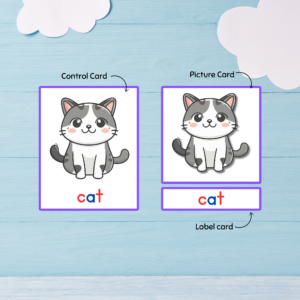
These cards are designed to help children connect sounds with letters and to build their vocabulary in a visual and auditory manner.
How 3-Part Cards Support Early Literacy
Using 3-part cards helps children build literacy skills in the following ways:
- Word Recognition – Matching pictures with words reinforces vocabulary and sight word recognition.
- Phonics Practice – Children can sound out words, reinforcing letter-sound relationships.
- Hands-on Learning – The interactive nature of the cards engages multiple senses, helping with memory retention.
- Independence – Children can use the control card to check their work, fostering confidence and self-correction.
How to Use 3-Part Cards to Teach Phonics
Prerequisites:
Before diving into using 3-part cards, there are a few things to ensure the child is ready to engage with phonics:
- Sound Recognition: The child should first be familiar with the individual sounds of letters. It’s essential that they know how consonants and vowels sound before attempting to blend them into words.
- Letter Names: While it’s not mandatory to know the names of letters (like ‘A’, ‘B’, ‘C’), it’s helpful for the child to recognize each letter’s shape and sound.
- Basic Vocabulary: The child should have some basic vocabulary and be able to identify simple objects around them.
Once the child has these foundational skills, you’re ready to begin using 3-part cards!
Step-by-Step Instructions for Parents and Teachers:
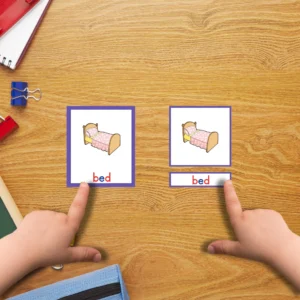
- Introduce the Card Set: Lay out a set of 3-part cards with CVC, CVCC, or CCVC words. Start with simpler CVC words like “cat,” “dog,” and “pen,” before progressing to more complex patterns like CVCC or CCVC.
- Start with the Picture Card: Show the child the picture card. Ask them to identify what’s in the image (e.g., “What is this?”). For the “cat” card, the expected response would be, “It’s a cat.”
- Introduce the Word: Next, show the child the word label card and say the word aloud (e.g., “This is the word ‘cat'”). Point to each letter as you say its corresponding sound. For “cat,” you would say, “c—a—t” and encourage the child to repeat the sounds after you.
- Sound Blending: Once the child is familiar with the word’s sounds, guide them to blend the sounds together to say the full word (e.g., “c—a—t” becomes “cat”). Help them make the connection between the sounds and the letters.
- Use the Control Card: After working through the picture and word label card, place the control card (the card with only the word) in front of the child. Ask them to read the word aloud on their own, either with support or independently, depending on their skill level.
- Self-Checking: The control card allows the child to check if they read the word correctly. They can compare their pronunciation with the picture card to ensure the word makes sense.
- Repetition and Mastery: Encourage the child to continue with other cards, repeating the process of matching the picture, labeling the word, and blending the sounds. As they become more comfortable, gradually introduce more complex words (CVCC and CCVC), like “bend” and “straw,” while always emphasizing sound blending.
Expected Responses and Outcomes:
- Initial Learning: At the beginning, the child might need a lot of guidance with sounding out the words and recognizing the corresponding sounds. They may rely heavily on the picture cards to help make connections between sounds and words.
- Gradual Independence: Over time, the child will start to rely less on the picture cards and more on the word cards as they become more confident in their phonics skills.
- Building Fluency: With repeated practice, children will begin to read CVC, CVCC, and CCVC words with greater ease, and they’ll start recognizing patterns in words (like “cat” and “bat,” or “bend” and “send”).
Tips for Success:
- Use a multisensory approach: Encourage the child to trace the letters on the card with their finger while saying the sounds aloud. This reinforces the tactile and auditory connections.
- Keep sessions short and focused: Young children have short attention spans, so aim for short, focused sessions. A few minutes of practice each day can be very effective.
- Celebrate progress: Celebrate every step of the child’s phonics journey! Whether they can sound out a new word or are simply able to repeat sounds more confidently, progress is worth acknowledging.
By using Montessori 3-part cards, children are not only learning to read, but they are also building critical thinking skills, improving memory, and enhancing their vocabulary. The self-correcting nature of the cards allows for independent learning, which is key to building a child’s confidence and love for learning.
Download Your Free 3-Part Cards!
Ready to get started? Subscribe to our newsletter, and you can download your own set of Montessori-inspired 3-part cards for CVC, CVCC, and CCVC words for free! Simply print them on cardstock, cut them out, and you’re ready to begin your phonics adventure with your little learner.

